Breaking the News: How the First Media Moguls Shaped History
by James Corbett
corbettreport.com
October 10, 2021
I'm sure you're familiar with the old adage that "you are what you eat." Well, here's a similarly important observation that you probably weren't told as a child: you are what you read. Or, to put it in terms that the "Netflix and chill" generation can understand: you are what you watch.
This should be a pretty obvious insight. Why do you think one of Jeff Bezos' first moves in his quest to become the real-life embodiment of a comic book supervillain was to buy The Washington Post? It's sometimes said that money is power, but Bezos' purchase of WaPo shows that owning a major press outlet is a way to leverage that power and stretch those dollars even further. Indeed, as I observed in How to Save the World (in One Easy Step!), narrative—the ability to shape people's understanding of the world through story—is the most powerful weapon in the world. It should go without saying that owning a major media entity is the most effective way of wielding that weapon.
I say "it should go without saying" because the history of mass media is the history of rich and powerful people trying to shape entire nations' understanding of the world. But, as usual, this is the type of history that is not taught in schools, so it's entirely possible that this observation in fact does not go without saying.
So today let's examine the story of some of the early media moguls and the effect that their control of the press had in shaping the history of the world in the 20th century.
William Randolph Hearst
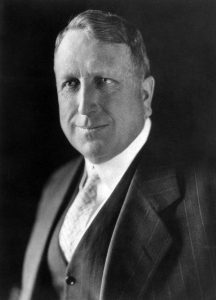
Given that William Randolph Hearst is probably best known today as the template for Charles Foster Kane, it might be difficult to understand just how influential Hearst was in his time, or how much he contributed to shaping the world as we know it.
Inheriting the San Francisco Examiner newspaper from his wealthy father at the ripe young age of 24, Hearst built up Hearst Communications, a national newspaper chain and media company that changed the face of "journalism" in the United States and had a direct impact on the public's response to many of the defining events of his time.
It was the circulation battle between Hearst's New York Journal and Joseph Pulitzer's New York World in the 1890s that birthed the term "yellow journalism," which is used to describe sensationalistic, under-reported stories that are primarily used to catch reader's attention and sell newspapers. Hearst pioneered the techniques we now associate with the worst tabloids—sensational headlines, eye-catching layouts, emotional stories with a focus on the salacious, etc.—and used them to whip the public into a frenzy over the hobgoblin of the week (and, by the way, sell newspapers in the process).
The effects of these techniques upon the public are most obvious in the story of the Spanish-American War, where the infamous (and likely apocryphal) story has it that when Fredric Remington—assigned to cover the uprising against Spanish colonial rule in Cuba in 1897 for the New York Journal—telegraphed Hearst to tell him that ""Everything is quiet" and "There will be no war," Hearst replied: "Please remain. You furnish the pictures, and I'll furnish the war."
Whether the infamous telegram exchange happened or not, Hearst did indeed help to furnish the war. The New York Journal's coverage of the (likely false flag) explosion of the USS Maine in Havana Harbor in February 1898 was particularly incendiary (pun intended), stressing the "Spanish mine" hypothesis for the explosion and offering a (meaningless but attention-grabbing) $50,000 reward for information leading to the conviction of those responsible. The public, suitably outraged, took up the rallying cry that is still remembered to this day: "Remember the Maine and to hell with Spain." Hearst got his war and sold a lot of newspapers in the process.
Hearst's legacy remains with us today in the form of the Hearst media empire, which continues to publish a number of magazines and newspapers and owns a stake in a number of television and online media companies. This will be well-known to old-timers in the 9/11 Truth space who had to confront the yellow journalism treatment that Hearst's Popular Mechanics afforded the movement in its 9/11 "debunking" special report (and subsequent book) . . . that just happened to be researched by a man named Chertoff. But Popular Mechanics' Chertoff is just a distant cousin of the former Homeland Security czar, conspiracy theorist!
Henry Luce
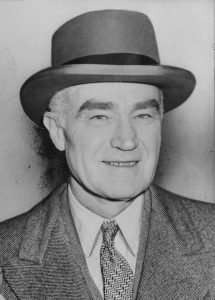
Called "the most influential private citizen in the America of his day," Henry Luce was the media mogul and driving force behind the Time-Life magazine empire. Born in China to missionary parents, Luce attended Yale and joined (you guessed it) Skull and Bones before co-founding Time Inc. with some fellow Yalies in 1923.
Beginning with Time magazine, which was extremely influential in summarizing and interpreting the news of the week for a wide swath of the American public, Luce began methodically constructing a magazine empire that extended into every corner of American society: Fortune, launched in 1930, covered business affairs. Life, acquired in 1936, became a trendsetting arts and culture journal. Later additions like House and Home and Sports Illustrated ensured that Luce's press organ extended into the personal lives of the majority of Americans.
But he was not content to stop there. Luce also helped pioneer the newsreel medium with his highly influential March of Time series, which was actually a money loser for Time Inc. despite its incredible popularity. Nonetheless, it helped shape public perception on the defining events of the time, from the "philanthropic" work of the Rockefeller foundation to the events of WWII to the advent of the Cold War.
As a Skull and Bonesman, it shouldn't be surprising to learn that Luce put his media empire in the service of the CIA and his good friend, Allen Dulles. According to Carl Bernstein:
Allen Dulles often interceded with his good friend, the late Henry Luce, founder of Time and Life magazines, who readily allowed certain members of his staff to work for the Agency and agreed to provide jobs and credentials for other CIA operatives who lacked journalistic experience
JFK buffs will know that it was Luce's Life magazine that purchased the Zapruder film and negotiated the exclusive rights to Marina Oswald's story. They will also know that Luce then sat on both, not publishing Marina's story and publishing only individual frames of the Zapruder film without letting it be screened in its entirety.
Media history buffs may also know that Luce was the driving force behind the establishment of the Commission on Freedom of the Press, a committee that convened in the mid-1940s to examine the question of the First Amendment, the freedom of the press and what the government could or should be doing to limit those freedoms. Though now largely forgotten, the committee's work—detailed in the recent book, An Aristocracy of Critics, published by (who else?) Yale University Press—is still cited as a landmark in the field of media studies and largely predicted the types of arguments that are now made for why government regulation of the press is a good thing.
The Ochs-Sulzbergers
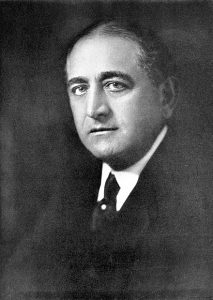
The New York Times, the "newspaper of record" for America, was founded as the New-York Daily Times in 1851 by journalist and politician Henry Jarvis Raymond and former banker George Jones. The NY Times' (unsigned) mission statement from the first edition of the paper pledged the paper would "seek, in all our discussions and inculcations, to promote the best interests of the society in which we live."
But, as Ashley Rindsberg reveals in his new book on the paper, The Gray Lady Winked, that lofty promise soon took on a more cynical form: it would seek to promote the best interests of its publisher. Specifically, the NY Times came under the control of Jewish newspaper magnate Adolph Ochs in 1896 and from that point forward the paper became a hereditary patriarchy, passed down through Ochs' family, from his son-in-law, Arthur Hays Sulzberger, to the husband of his granddaughter, Orvil Dryfoos, to his grandson, Arthur Ochs Sulzberger, to his great-grandson, Arthur Ochs Suzlberger, Jr., to his great-great-grandson, Arthur Gregg (A.G.) Sulzberger.
And all throughout that lineage, as Rindsberg notes, the Ochs-Sulzberg clan has helped to shape the contours of history in their own interest even as their paper reported on it. Their own interest, as it happens, tends to lie in promoting dictators and villifying popular leaders in other countries as needed for political and economic expedience. Thus, the paper was instrumental in promoting and running cover for Hitler, Stalin and Castro at various points in their rise to power. They also targeted regimes for overthrow, most notably in our time by giving succor to Judith Miller and the WMD lies in the run-up to the war on Iraq in 2003.
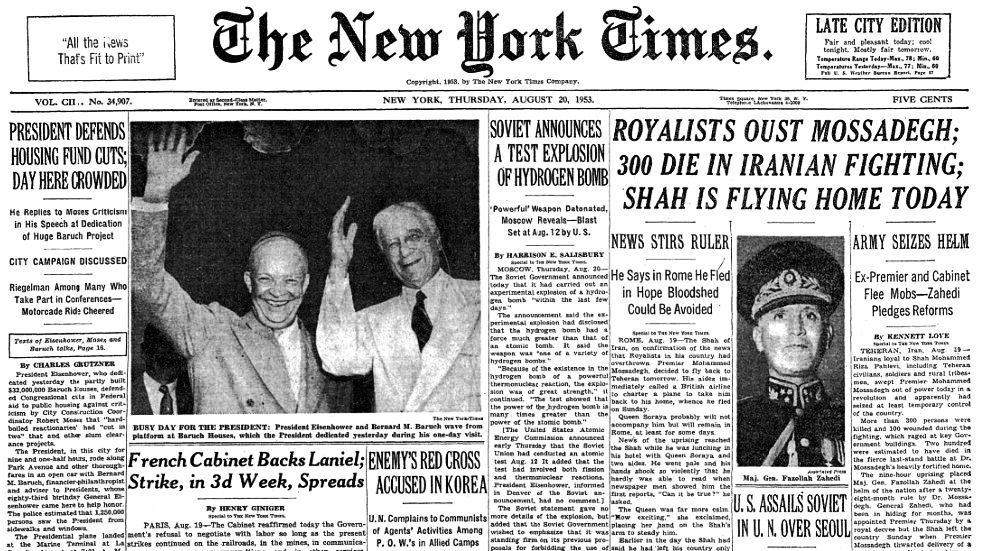
And, as Alan MacLeod pointed out in a 2019 piece on the New York Times' history of backing US regime change operations, its tendency to back despots and champion the State Department's moves against democratically-elected leaders led them to come down on the wrong side of history in the operation to remove Mossadegh from power in Iran in 1953, too.
The Times expressed a “deep sense of relief,” many felt that Mossadegh, a “fanatical power-hungry man” and a Kremlin stooge who had “wrecked the economy” in his “bid for dictatorship” had been deposed. The editorial board gave a warning to others who might try to nationalize industries owned by American corporations: “Underdeveloped countries with rich resources now have an object lesson in the cost that must be paid by one of their number which goes berserk with fanatical nationalism,” it wrote, two days after Mossadegh’s ouster.
If ever there a case to be made that the press barons are an inter-generational criminal mafia, the Ochs-Sulzbergers would be Exhibit A in that presentation.
William Paley
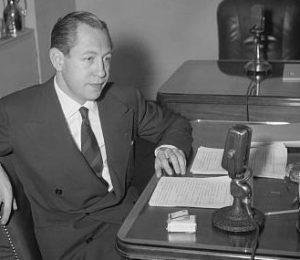
William Paley is hardly a household name at this point, but his influence is no less far-reaching than some of the other media moguls on this list. Like Hearst, Paley broke into the business through his father, who bought the struggling Philadelphia-based Columbia Phonographic Broadcasting System radio network in 1927 as a medium for advertising the family's cigar business. Handing the management of the 16-station network to his son, William Paley saw quick success: within a year, cigar sales had doubled. More to the point, within a decade Paley expanded the network to include 114 stations and birthed the CBS media empire.
Getting in near the ground floor of the radio broadcasting boom of the 1920s, Paley was uniquely situated to understand the power of the new medium. It not only provided a lucrative business model, but played an increasingly important role in shaping public opinion on the issues of the day. It was only logical, then, that Paley was tapped by the US government to head the Psychological Warfare branch of the Office of War Information in World War II, a position from which he not only further refined his understanding of effective propaganda techniques but also met and befriended the rising star of broadcast journalism, Edward R. Murrow, who came to prominence doing live radio broadcasts in Europe for CBS during the war.
It should come as no surprise, then, that Paley (like Sulzberger and Luce) was fingered by Carl Bernstein in his landmark 1977 Rolling Stone article, “The CIA and the Media," as one of the many media tycoons that actively cooperated with the CIA in the mid-20th century. The CBS-CIA relationship was confirmed by Sig Mickelson—the head of CBS News in the 1950s and the man credited with launching the career of “the most trusted man in America”, Walter Cronkite—toward the end of his career, when he admitted not only that "his organization had cooperated with the Central Intelligence Agency to the extent of 'sharing information'" but that that cooperation had taken place at the behest of Paley.
Conclusion
This is just a quick overview of some of the largest media moguls of the early 20th century, but it is of course not an exhaustive one. There were many other press barons of the era who played an important role in helping the US government mold the minds and influence the perceptions of the American public, and that's to say nothing of the moguls in other countries—like Lord Beaverbrook in England—who performed similar functions in their respective countries.
The story could also be extended forward in time. Although there are few newspaper publishers or TV network owners who loom large in the cultural imagination today, it could be argued that Zuckerberg and Dorsey are essentially serving the same function in today's online media environment.
But simply identifying the moguls and listing their "accomplishments" doesn't quite tell the whole story. As Zachariah Chafee of the aforementioned Commission on Freedom of the Press observed: "men seek personal Devils to explain whatever is wrong, but we of the Commission know that the linotype and the radio tube are as much responsible for our anxiety as Hearst."
Next week we will examine what is meant by this statement and how the evolving technology of communication has been as responsible for shaping our understanding of the world as the actions of these media moguls.
*Are you interested in learning more about this topic? I'll be teaching a course on the History of the Mass Media for Renegade University next month that will go into much greater depth on these issues. You can find more information about the course and details on how to sign up via THIS LINK.